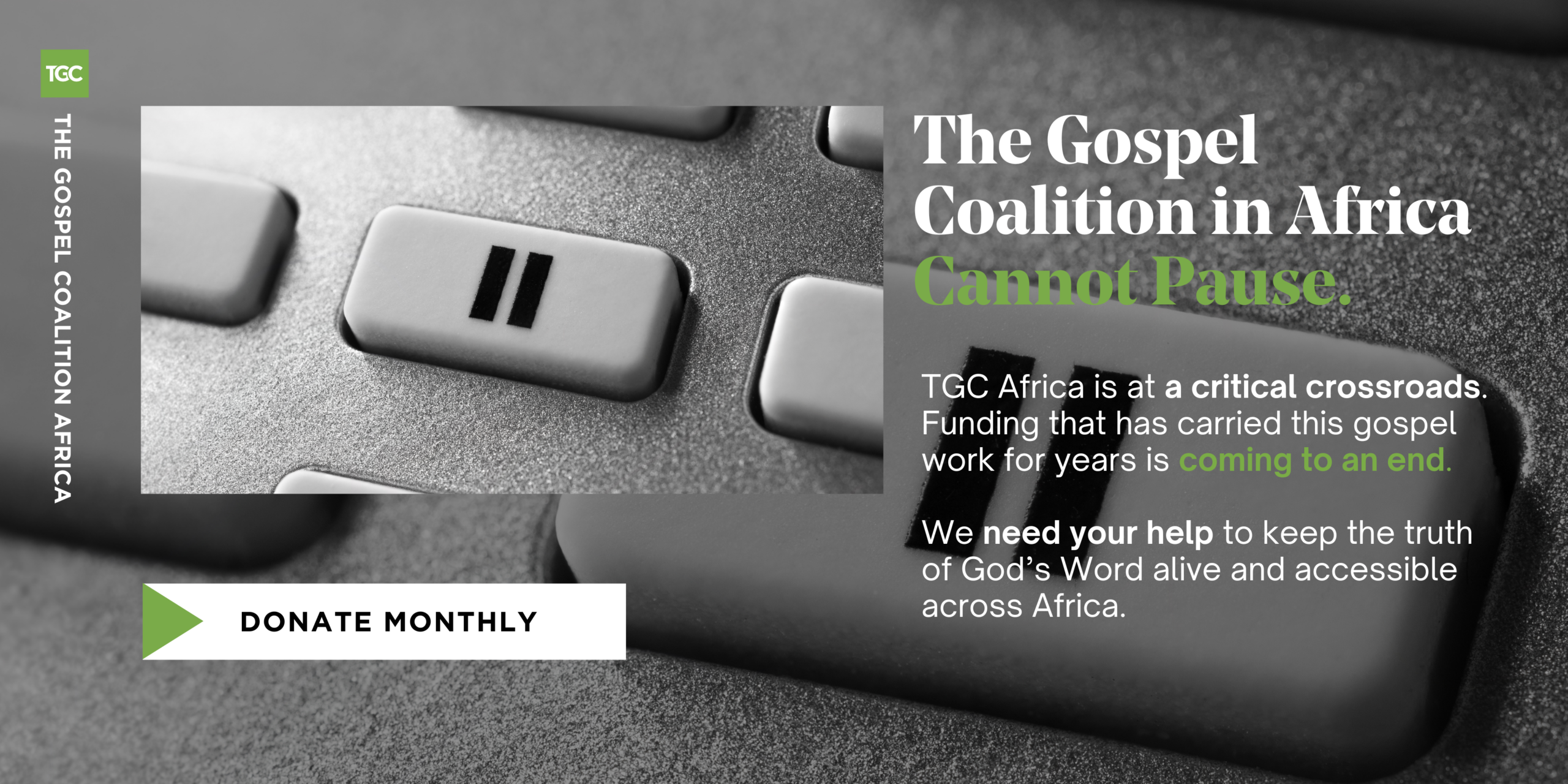The Church of Jesus Christ of Latter-day Saints uses Christian terminology, but its underlying theology is radically different. Its African missionaries quote the Bible. However, they routinely misinterpret and misapply it according to the revelations of their “latter-day” prophets. Understanding such fundamental differences is crucial—not only for doctrinal clarity, but also for effectively engaging our Latter-day Saint friends with the genuine gospel.
Is the God of Mormonism the God of the Bible?
One of Mormonism’s most significant rejections of biblical Christianity is its doctrine of God. The Bible teaches that there is only one true, eternal, and unchanging God, who has always existed as Father, Son, and Holy Spirit. However, Mormonism presents a profoundly different view. A view that is both anthropomorphic (assigning human characteristics to God) and polytheistic (affirming the existence of many gods).
No Trinity—and a Mortal “Heavenly Father”
Latter-day Saints flatly reject the Christian doctrine of the Trinity and claim that God the Father, Jesus, and the Holy Spirit are three separate gods. The founder of Mormonism, Joseph Smith, preached: “Many men say…the Father, the Son and the Holy Ghost are only one God! I say that is a strange God anyhow—three in one, and one in three! It would make the biggest God in all the world. He would be a wonderfully big God—he would be a giant or a monster” (see the Teachings of the Prophet Joseph Smith, p372).
In sharp contrast to the finite God of Mormonism, the true God is omnipotent and omnipresent.
So the Latter-day Saint Church teaches that God the Father is a flesh-and-bone man who once lived on another planet and eventually attained godhood. This doctrine, known as exaltation or eternal progression, states that God the Father had to undergo a process of spiritual development, learning, and obedience to achieve godhood.
In sharp contrast to the finite God of Mormonism, the God of the Bible is omnipotent and omnipresent, and has eternally existed in his fullness as the all-powerful, all-knowing, and unchanging Lord.
A Plurality of Gods
The Church of Latter-day Saints also claims that worthy members can become gods and rule over their own worlds for eternity. As Joseph Smith famously stated: “God himself was once as we are now, and is an exalted man, and sits enthroned in yonder heavens!,” adding that “you have got to learn how to be Gods yourselves…the same as all Gods have done before you” (Teachings of the Prophet Joseph Smith, p345).
This temptation to ‘become like God’ isn’t new; it mirrors Satan’s lie in Eden.
In Latter-day Saint theology, the universe is filled with countless humans who have all achieved godhood through the same process that all Mormons hope to undergo. This belief in multiple gods is polytheistic. It rejects the foundational Christian belief in one eternal, unchanging God (Psalm 90:2; Isaiah 43:10; Numbers 23:19). This temptation to “become like God” isn’t new. In fact, it mirrors the lie that Satan used to deceive Eve in the Garden of Eden (Genesis 3:5).
Mormons often boast that they alone belong to “the Church of Jesus Christ.” But Mormonism actually distorts and diminishes Jesus. Rather than recognising him as the eternal, co-equal God the Son (John 1:1; Colossians 1:15–17), it claims that he was first a “spirit son” of a heavenly Father and Mother and became a god. Mormon doctrine also distorts the incarnation, denying Jesus’ virgin birth by teaching that our heavenly Father had physical relations with Mary to produce Jesus’ earthly body. Latter-day Saints are even instructed not to pray to Jesus.
In Mormonism, the “Holy Ghost” is a “personage of Spirit” who became a god without undergoing the process of eternal procession. He can be in only one place at a time (Gospel Principles, p32).
Is Mormonism’s “Restored Gospel” Good News?
The overall Latter-day Saint view of salvation is equally problematic. When Mormons speak of grace, they don’t mean the unmerited favor of God that fully saves sinners. According to the Book of Mormon, “It is by grace that we are saved, after all we can do” (2 Nephi 25:23). This teaching makes redemption dependent on individual human effort rather than on Christ’s finished work alone.
Salvation Through Obedience to Mormon Laws
Mormon theology reinterprets the fall of man. Adam’s transgression is explained as a necessary and noble step toward human progress, rather than the tragic entry point of sin and death. Thus, humans are born sinless. Further, while the Bible teaches only two eternal outcomes—eternal life or damnation—Mormonism offers no fewer than three heavens, with the highest (the “celestial kingdom”) reserved for the most faithful Mormons. While biblical Christianity teaches that the wicked will face eternal judgement in hell, Mormonism basically teaches that they will be granted a lower (“telestial”) level of salvation.
Salvation is replaced with an impossible, performance-based system of striving for godhood.
In Mormonism, salvation isn’t simply about reconciliation with God. “Eternal life” equals exaltation; that is, becoming gods and ruling over future worlds. This requires strict adherence to Latter-day Saint practices, including tithing and “celestial marriage.” The biblical truth that Christ’s righteousness alone secures eternal life (2 Corinthians 5:21) is replaced with an impossible, performance-based system of striving for godhood.
Reaching Latter-day Saints with the Gospel
Many Mormons sincerely believe that they are Christians. We must approach them with both truth and love (Colossians 4:6; 1 Peter 3:15). Engaging with Mormons requires patience, a strong grasp of biblical doctrine, and an understanding of their beliefs. Here are three helpful approaches.
1. Ask Questions Instead of Arguing
Rather than directly attacking their faith, thoughtful questions can lead to meaningful discussions. These will help Mormons reevaluate their beliefs without feeling threatened. For example, you could ask:
- “If God was once a man, who created the first God?”
- “If salvation is by works, how much is enough?”
- “If Jesus accomplished our salvation, why does your church also require temple ordinances and priesthood rituals?”
2. Use the Bible, Not Just Theology
Mormons respect the Bible, even though they view it as corrupted. Since it’s one of their scriptures, presenting clear biblical passages in their proper context is an effective way to show contradictions between Latter-day Saint teachings and God’s word. Rather than debating extra-biblical Mormon texts (such as the Book of Mormon or Doctrine and Covenants), stick to the Bible itself, which has the power to convict and reveal.
3. Emphasise the Sufficiency of Christ’s Atonement
Many Mormons struggle with guilt and fear of unworthiness. For their system requires them to continually strive for perfection so they can qualify for the highest level of heaven. This gives us an opportunity to share the good news that Christ’s atoning sacrifice was sufficient to purchase eternal life for repentant sinners.
The Bible teaches that Jesus’ work on the cross completely secures salvation.
The Bible teaches that Jesus’ work on the cross completely secures salvation for those who put their hopes in him (John 19:30; Romans 8:1). Remind Mormons that salvation is about fully trusting in Christ’s finished work, not their own imperfect efforts (Titus 3:5; Romans 6:23). For in Christ the believer has “been made complete” (Colossians 2:10) and is saved “to the uttermost” (Hebrews 7:25).
Holding Fast to the True Gospel
As Paul reminds us: “I am astonished that you are so quickly deserting the one who called you to live in the grace of Christ and are turning to a different gospel—which is really no gospel at all” (Galatians 1:6–7). Mormonism offers a false gospel that distorts the nature of God and denies the sufficiency of what Christ accomplished for our salvation. Our mission is not just to refute its errors, but to point Mormons to the joyous hope that’s found in the true God and the true gospel of salvation by grace alone, through faith alone, in Christ alone.
DON’T HAVE PAYPAL TO SET UP A MONTHLY DONATION? If you would like to donate via Payfast – a secure payment gateway available to donors both inside and outside of Africa – please click here.














